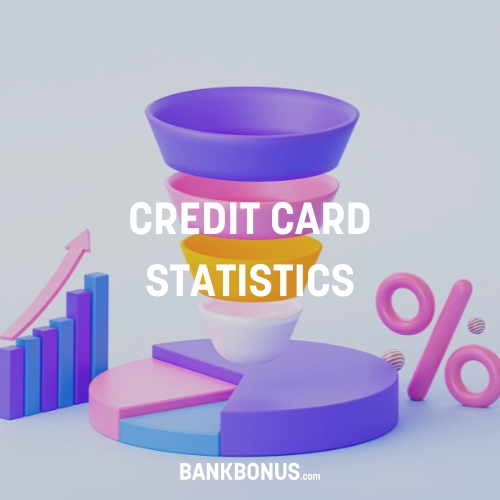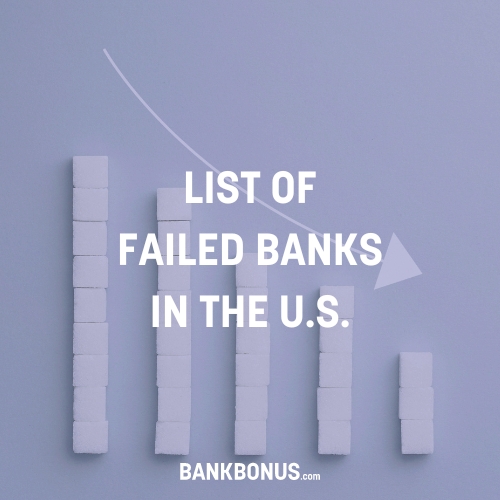Credit cards are a convenient and popular payment form, allowing the holder to purchase items that they may not have the physical cash for.
However, more than that, they are able to offer certain protections and allow you to earn rewards in the process (such as cashback, air miles, and more).
Major Credit Card Networks
Credit card companies are payment networks, also sometimes known as card issuers.
There are four main credit card networks in the U.S.:
- Visa
- Mastercard
- American Express
- Discover
Credit card networks process and transfer funds between the cardholder and merchant. Each of these networks, also known as card associations, has the same basic principles (though the details will vary from network to network).
A payment processor will use your card’s network when you make a credit card purchase to transfer that information between your bank (or other financial institution with whom you have the card) and the merchant’s.
On the other hand, the credit card issuer is who actually supplies you with your credit card. While they may be a credit union or otherwise, in the U.S. it’s very likely one of the major national banks.
Learn more:
Top 10 Credit Card Companies
There are ten major credit card companies in the U.S. and, according to the Nilson Report, are responsible for over 80% of the market when it comes to credit cards.
- American Express
- Bank of America
- Barclays
- Capital One
- Chase
- Citi
- Discover
- Synchrony
- U.S. Bank
- Wells Fargo
While it is possible to have a credit card from outside of these companies (and they are no less legitimate), it’s more likely that you’ll hold a card from one of the major companies since they operate on a national and global scale.
1. American Express 
American Express has been around since 1850 when it was established as a freight shipping and express mail company.
However, in the early 1900s, they expanded into travel and financial services and then began issuing their first paper charge cards in 1958.
By 1966 they had issued their Gold Card, by 1969 their Green Card, their Platinum Card in 1984, and in 1999 their Centurion Card.
Today, American Express (or Amex, as it’s more commonly known) is the second-largest card issuer in the U.S. and has the fourth-largest card portfolio globally (as of the 2020 Nilson Report).
American Express now offers both credit and charge cards and has an excellent rewards program, allowing you to earn Amex Membership Rewards points. They also have multiple airline and hotel partners.
Some of the rewards you can redeem with your Amex points include gift cards, paying with points online, or redeeming your points for travel with the Amex travel portal.
As previously mentioned, the majority of American Express cards are issued through American Express (there is a handful that are issued in partnership with other credit card issuers, but they aren’t the best cards available from the network).
2. Bank of America 
Bank of America was founded in San Francisco in 1904– then known as Bank of Italy!
It rebranded to Bank of America and Italy in 1922, but it wasn’t until after 1998 that BankAmerica was acquired by NationsBank and then became Bank of America.
Their first credit card, released in 1958, was one of the first credit cards available to the general public.
Today, Bank of America is responsible for roughly 67 million clients, including both the average consumer and small businesses. They’re in the top five card issuers in the U.S. and hold the 7th largest card portfolio globally (according to the Nilson Report).
They offer many credit cards, including student cards (many of which don’t come with an annual fee), as well as a highly recommended and easily accessible rewards program: Preferred Rewards.
There are multi-tiered rewards available through their program (tiers are dependent on how much you have in both your banking and investment accounts), which can include discounts on interest rates, rewards bonuses, waived ATM transaction fees, and discounts to their investment program.
There are also other perks across dining, travel, shopping, and more, but these are mostly reserved for their Diamond tier customers.
Learn More:
3. Barclays 
Barclays was established in London, England in 1690. By 1896 they had 12 different banks across England, and this only continued to grow! They launched their first credit card for consumers in the 1960s.
While Barclays has often been considered a British bank thanks to their global diversification, you can now find them operating in over 40 different countries– as well as being the fifth largest bank in Europe. In the U.S., they operate as Barclays Bank of Delaware.
While they are still one of the top major card issuers in the U.S. courtesy of their British base, they’ve had limited success in issuing credit cards under their own name. Today, they mostly offer co-branded credit cards for both retail and travel.
Some of the brands you may see associated with Barclays include:
- JetBlue
- Carnival Cruises
- Choice Privileges
- Frontier Airlines
There are various rewards available, too, related to low or no-annual-fee cards, cash-back, dining out, groceries, travel, and more– though the choice is somewhat more limited than other rewards programs.
4. Capital One 
Capital One is a relatively newer bank, having only been established in 1994.
Established as a monoline bank, they were established only to issue credit cards. While this is usually a risky move, it paid off– Capital One now holds the 8th largest card portfolio globally!
In addition to credit cards, Capital One now also offers charge cards, checking and savings accounts, business and auto loans, and plenty more.
Capital One is actually one of the easier credit card issuers to be approved by, as they have a wide range of cards in their portfolio– some of which are geared towards those with low, no, or poor credit.
There are also plenty of rewards cards available, and the rewards program includes cash-back and travel miles which will never expire for as long as your account stays open.
5. Chase 
JPMorgan Chase & Co., more commonly known as Chase, has existed since 1799 (then known as Chase Manhattan Company). In 2000, it merged with JP Morgan, and today is the fifth-largest bank globally with the largest card portfolio.
With over 4,700 branches across the U.S., Chase is one of the most popular card issuers, as well as offering checking and savings accounts, and home and auto loans.
They deal with investments as well as small businesses and consumers, commercial banking, processing, and management of assets.
However, where Chase really stands out is its Chase Ultimate Rewards program. This highly acclaimed rewards program is one of the best out of all credit card issuers.
Rewards include pay-by-points, gift cards, travel, and hotel partner point transfers, cash-back, dining, travel, bonus points, experiences, and more.
Some of the travel and hotel partners include:
- British Airways
- Southwest Rapid Rewards
- Marriott Bonvoy
- World of Hyatt
6. Citi 
Citigroup Inc., more commonly known as Citi, was established in 1998– though its history as City Bank of New York began in 1812.
It was rebranded to The National City Bank of New York in 1865, and then merged with First National Bank of New York in 1955.
In 1967, they released their first credit card– the “Everything Card” (later MasterCard)– and officially changed their name to CitiCorp in 1974.
Today, Citi holds the second-largest U.S. portfolio and the third-largest card portfolio globally.
In addition to their credit cards, they also offer bank and financial management services. In particular, their online savings accounts are highly recommended due to their high-yield capabilities.
There’s a wide range of cards across the Citi network including for those with low or no credit rating (though these are somewhat limited). In addition, many of the cards on offer have a low or no intro offer APR, and no annual fees.
The Citi ThankYou Rewards program has plenty of rewards on offer, from cash-back, pay-by-points, and gift cards, to travel perks (including transfers to their travel and hotel partners).
They also partner with major companies, such as Walmart, Costco, and more.
7. Discover 
Discover Financial Services, more commonly known as Discover, was established in 1985 as a subsidiary of Sears. At the time, it was known as the Dean Witter Financial Services Group, Inc., and was established as a Sears-specific financial service.
However, the early years were not successful, and in 1993 it was spun off and rebranded to Dean Witter, Discover & Co.
It wasn’t until 1999 that the company was fully rebranded as Discover Financial Services Inc. under Morgan Stanley, and was then spun off as an independent publicly traded company in 2007.
Despite its complicated history, Discover is now one of the major credit card issuers in the U.S., acting as both an issuer and network.
Discover offers personal and business credit cards, personal, home, and student loans, and online banking services and products. They are also one of the only card issuers who will not open a line of hard inquiry on your credit report across all of their cards, making them a great option for those with low, no, or poor credit.
All credit cards across Discover’s network have no annual fee or foreign transaction fees. However, the Discover network is not particularly wide outside of the U.S., though they are actively working on expanding.
Rewards are through their cash back bonus, allowing you to earn cash back through grocery and drug stores, as well as certain streaming services.
You can also access gift cards, pay-by-points at Amazon and PayPal, and donate to either the ASPCA or Make A Wish Foundation.
8. Synchrony 
Synchrony Financial, or Synchrony, was established in 1932 as GE Capital Retail Bank. It was then spun off in 2014 and rebranded as Synchrony Financial.
As mentioned earlier, Synchrony is not a huge household name, since co-branded retail cards are almost exclusively their offering. Co-brands include:
- Lowe’s
- Ashley HomeStore
- Gap
- Sam’s Club
They also offer savings and money market accounts, Certificates of Deposit, and various other financial products, but it’s the co-branded cards where the root lies.
Rewards will depend on the co-brand but are usually only available to use and relevant to the specific store which the card is affiliated with.
One major benefit of Synchrony’s co-branded cards is that if you’re a frequent shopper at a particular store, you can reap the benefits of either making larger purchases you can then pay off over time or the rewards associated with the card.
9. U.S. Bank 
U.S. Bancorp, or U.S. Bank as it’s more likely to be known, was established as the United States National Bank of Portland in 1891.
It merged with Ainsworth National Bank of Portland in 1891 and then rebranded to the United States National Bank of Oregon in 1964.
It wasn’t until 1969 that it became known as U.S. Bancorp, and only began issuing credit cards fairly recently.
Today, while they only hold a relatively small portion of the credit card market, they offer financial services and products to consumers, as well as businesses and corporations. They also have a wide presence across the entire U.S.
U.S. Bank has cards that are both co-branded and bank-branded, with a huge variety of options.
Their rewards program allows you to earn cash back on your regular day-to-day purchases, as well as redeem across a huge range of categories. This includes grocery and department stores, electronics, travel, and even accommodation.
It is important to note that your cash-back rewards do have an expiration date of 36 months after the billing cycle in which you earned them. In addition, your account must remain both open and in good standing in order to earn or redeem your rewards.
However, this is one of the only issuers with cards that allow you to choose your own rewards, making them an excellent choice for consumers.
10. Wells Fargo 
Wells Fargo & Co., or Wells Fargo, was established in 1852 to provide “express” banking services to California during the gold rush era.
As it grew, Wells Fargo Nevada combined with the Union Trust Company in 1923 to become what is now known as Wells Fargo Bank & Union Trust Company, offering more traditional banking.
This was then shortened to Wells Fargo Bank in 1954, finally becoming Wells Fargo & Co. in 1969.
Wells Fargo first began issuing credit cards at the end of the 20th Century, and today also offers car loans, mortgages, and more.
Their credit cards are available for both consumers and businesses, and they’re one of the most recognizable financial brands in the country.
Wells Fargo switched up and overhauled their credit cards, now offering both a cash-back card and 0% intro APR card with a term of 18 months (plus a 3 month extension). Now, that’s value!
The Wells Fargo Rewards program is also highly competitive, with the opportunity to earn and redeem your rewards across categories such as travel, gift cards, and purchase reward redemption. You can even redeem rewards as a credit to your credit card, checking account, or mortgage.
Credit Card Issuer vs. Credit Card Network
As we’ve already discussed, the credit card issuer and credit card network are two different things, though they work in tandem together.
Let’s go into detail on both a little further.
Credit Card Issuer
Credit card issuers are the banks or other financial establishments that will provide you with a credit card and line of credit (i.e., how you can actually make purchases).
The issuer is also who will manage your account, and while they’re often associated with the major banks, it’s not always the case. They’re also the ones responsible for approving, or denying, your application, and whom you’ll correspond with.
Two examples of major credit card issuers you may not have heard of are Synchrony Financial and Comenity Bank. While they don’t have many U.S. in-person branches, they are two of the largest issuers when it comes to store credit cards.
If you’ve ever held a specific store credit card, chances are they’ve been issued by Synchrony or Comenity.
Credit Card Network
Credit card networks, as previously mentioned, are how the information is actually transferred between your bank and the merchant you’re purchasing from.
In other words, they are who process your transactions. Remember that you, as the cardholder, will only ever communicate with your issuer and not your network.
All credit cards are associated with one network in particular, and will only be able to work with merchants who also operate with that network.
For example: While Visa is a global network and is often accepted worldwide, American Express is not, and may incur an additional transaction fee.
When you visit a restaurant or shop (especially when traveling), you may see a Visa or Mastercard sticker in the window– indicating that both of these networks are accepted in that establishment.
It’s important to note that credit cards may sometimes operate with the same issuer and network, but more often than not they’ll be different.
Most credit card networks will partner with issuers, which is why you’ll see Bank of America credit cards with the Visa symbol.
However, American Express and Discover only issue their own cards, and you can only obtain one directly through them.
How Credit Card Companies Make Money
Credit card companies make their money in a variety of ways. This can include fees charged to the consumer every time you make a transaction, as well as any interest and penalty fees.
Here’s a breakdown of the major ways credit card companies will earn:
- Transaction Fees: Card networks will charge a set fee every time you pay for something with your credit card. This is usually between 1%–4% and can either be included in the cost of your purchase or will be passed on to you by the merchant when paying.
- Interest Fees: Interest rates, or a card’s APR (annual percentage rate), will vary from card to card and issuer to issuer. It’s charged when you fail to pay your credit card bill on time and in full– so if you want to avoid this, be sure to practice good credit card habits!
- Annual Fees: Some credit card issuers will charge an annual fee on certain cards while appearing to offset the fee with high-end rewards. However, these are usually targeted at consumers with bad credit and can send you into further debt.
- Other Miscellaneous Fees and Charges: There are a variety of fees that may apply, depending on your specific card and issuer. These can include late fees, cash-advance fees, balance transfer fees, foreign transaction fees, and over-limit fees.
The Bottom Line
There are many different credit card companies and credit card options out there, which can make choosing a credit card a little overwhelming.
When looking for a credit card, pay close attention to the terms and conditions (including the regular APR outside of the intro offer), and carefully consider your financial circumstances and needs.
If the rewards look a little too good to be true, it’s probably because there’s an annual card fee attached or a high APR.
Nobody can tell you which credit card is best for you, but as long as you practice good credit card habits, you’ll be well on your way to financial success!





Comments are closed.
Comments are closed here.